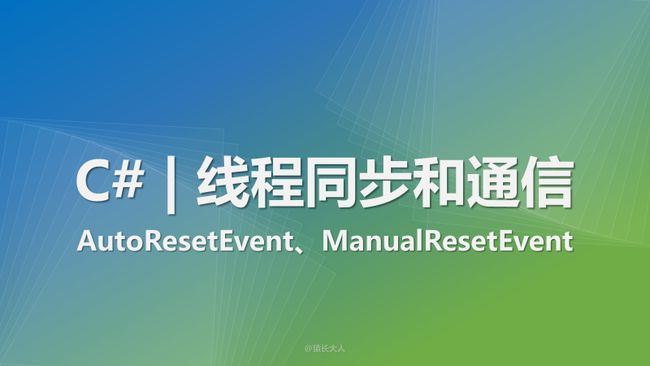- 小鹏P7自动泊车技术方案浅析
yuyuelongfly
自动驾驶小鹏P7APA自动泊车自动驾驶
目录一、概述二、感知算法1.视觉库位检测1.1.视觉系统1.2.库位检测算法1.3.同步建图与定位技术1.4.其他要素检测2.超声波库位检测3.视觉库位检测与超声波库位检测融合三、路径规划与控制四、HMI一、概述泊车算法离不开感知&融合、规划&控制,从目前行业技术发展的角度来看,泊车涉及的每一个算法都不算完美,甚至可以说仍不成熟。然而,小鹏P7采用优秀的系统方案设计,特别是通过引入同步建图与定位技
- Java-servlet(四)详细讲解Servlet类层次结构与生命周期
珹洺
Javaservletjavaservlet开发语言运维服务器后端
Java-servlet(四)详细讲解Servlet和生命周期前言一、Servlet类层次结构1.Servlet包2.Servlet与ServletConfig与Serializable的关系1.三者分别是什么2.三者之间的关系3.如何让类具有Servlet功能二、Servlet生命周期1.初始化阶段2.服务阶段3.销毁阶段总结前言Servlet是JavaWeb开发的核心组件,负责处理客户端请求并
- 【北上广深杭大厂AI算法面试题】深度学习篇...MobileNet 系列网络发展与高效性分析(附代码)(二)
努力毕业的小土博^_^
AI算法题库人工智能算法深度学习卷积神经网络
【北上广深杭大厂AI算法面试题】深度学习篇…MobileNet系列网络发展与高效性分析(附代码)(二)【北上广深杭大厂AI算法面试题】深度学习篇…MobileNet系列网络发展与高效性分析(附代码)(二)文章目录【北上广深杭大厂AI算法面试题】深度学习篇...MobileNet系列网络发展与高效性分析(附代码)(二)MobileNet系列网络发展与高效性分析(附代码)4.MobileNetV2(2
- 大湾区经济网:粤港澳大湾区的权威经济之声
大湾区经济门户网
其他人工智能大数据
在全球化与区域经济一体化的大背景下,粤港澳大湾区以其独特的地理位置、丰富的资源和强大的经济活力,正逐步成为世界经济发展的新引擎。作为粤港澳大湾区的唯一综合性经济门户网站,大湾区经济网在近日正式升级改版后,更是以全新的面貌和强大的功能,成为连接大湾区内外经济、文化、科技等多领域的重要桥梁。粤港澳权威媒体,打造综合门户新标杆大湾区经济网-粤港澳大湾区经济门户网集合粤港澳地区的主流媒体资源、政府支持及城
- ”天下第一神数“——紫微斗数的JAVA实现!紫微玄机速run~
钮钴禄·爱因斯晨
赛博算命JAVA实现javapython开发语言
各位佬儿们好呀~~互三必回哦~更多精彩:个人主页赛博算命精彩文章:梅花易数的java实现赛博算命系列文章不作溢美之词,不作浮夸文章,此文与功名进取毫不相关也!与各位共勉!!文章目录#前言:一、紫微斗数简介二、紫微斗数的数学原理1.**命盘构建规则**2.**星曜分布算法**3.**运势推导逻辑**三、Java实现步骤1.代码分布实现1.1**数据结构设计**1.2**命盘构建算法实现**1.3**
- 华为OD-不限经验,急招,机考资料,面试攻略,不过改推,捞人
2301_79125642
java
超星(学习通)-Java后端一面网易互娱40min(感觉是G了)一篇不太像面经的面经2023总结,前端大二上进小红书秋招面经第一波海康红外图像算法实习(微影)面经测试工程师社招-测试面试题大厂在职傻屌。TPlink图像算法工程师一二三面经深圳海康红外图像算法实习(微影)面经TPLink提前批面经(已OC)传统车辆转规控算法岗秋招记录腾讯TEG测试与质量管理全记录瑞幸Java开发校招一面腾讯金融科技
- Docker 与 Docker Compose 的联系与区别,迁移项目时有什么不同吗?
Ven%
简单说深度学习docker实用linux命令实用系列dockereureka容器
Docker与DockerCompose的联系与区别联系:底层依赖:DockerCompose是基于Docker的工具,依赖Docker引擎运行。容器管理:两者均用于容器化应用的部署和管理。配置共享:DockerCompose的docker-compose.yml文件本质上是对多个Docker命令的封装和组合。区别:特性DockerDockerCompose适用场景单容器部署多容器应用(微服务架构
- Redis
任璐
redis数据库缓存
1.Redis简介简单来说redis就是一个数据库,不过与传统数据库不同的是redis的数据是存在内存中的,所以存写速度非常快,因此redis被广泛应用于缓存方向。另外,redis也经常用来做分布式锁。redis提供了多种数据类型来支持不同的业务场景。除此之外,redis支持事务、持久化、LUA脚本、LRU驱动事件、多种集群方案。2.我们为什么要用redis/为什么要用缓存呢?主要从“高性能”和“
- 大模型最新面试题系列:训练篇之模型监控与调试
人肉推土机
大模型最新面试题集锦大全面试人工智能pytorchAI编程语言模型
1.训练过程中需要监控哪些关键指标?如何设置报警阈值?关键指标损失函数值:包括训练损失和验证损失,反映模型在训练和验证数据上的拟合程度。准确率:分类任务中的预测正确样本占总样本的比例,评估模型的预测能力。召回率和F1值:在二分类或多分类任务中,用于更全面地评估模型性能,特别是在正负样本不均衡的情况下。学习率:监控学习率的变化,确保其处于合适的范围,避免学习率过大导致模型不稳定或过小导致训练收敛过慢
- Linux利用PROMPT_COMMAND实现审计功能
yes_is_ok
linuxlinuxhistory记录
Linux利用PROMPT_COMMAND实现审计功能这个系统审计,记录什么用户,在什么时间,做了什么操作。然后将查到的信息记录到一个文件里。一.配置1.在/etc/profile文件的最后,添加如下2行代码:exportHISTORY_FILE=/var/log/history/`date'+%Y%m'`.logexportPROMPT_COMMAND='{date"+%Y-%m-%d%T###
- 【华为OD机试真题E卷】54、统一限载货物数最小值 | 机试真题+思路参考+代码解析(C++、Java、Py)
KFickle
JavaPy)华为odc++java华为OD机试真题统一限载货物数最小值
文章目录一、题目题目描述输入输出样例1样例2二、代码与思路参考C++代码Java代码Python代码订阅本专栏后即可解锁在线OJ刷题权限个人博客首页:KFickle专栏介绍:最新的华为OD机试真题D、E卷,每题都使用C++,Java,Python语言进行解答,每个题目的思路分析都非常详细,持续更新,支持在线OJ刷题,订阅后评论获取权限,有代码问题随时解答,代码仅供学习参考一、题目题目描述火车站附近
- 地球科学数据学习笔记---流向与风向、浪向
fried-ghost
地球科学数据学习笔记学习笔记数据分析
一、流向(current)流向一般指流体前进的方向、去向,一般以正北方向为正,例如流体从南流向北,则流向为0°,其示意图如下二、风向与浪向风向与浪向一般都指来向,与流向相反,例如风从南吹向北,则为南风,风向为180°。气象数据中一般会将风速数据存成u、v两个分量(雷达数据除外),u分量表示纬向风,v分量表示经向风。u为正,表示西风,风向为270°;v为正,表示南风,风向为180°。示意图如下所示,
- 量子计算对区块链技术的影响:革新与挑战
Echo_Wish
前沿技术人工智能量子计算区块链
量子计算对区块链技术的影响:革新与挑战大家好,我是你们的技术伙伴Echo_Wish。今天我们来探讨一个颇具前沿性的话题——量子计算对区块链技术的影响。量子计算作为新一代计算技术,其强大的计算能力为各个领域带来了革新。然而,量子计算的崛起也对区块链技术提出了新的挑战和机遇。本文将详细分析量子计算对区块链技术的潜在影响,并通过代码示例说明具体问题,希望能引发你的深思。一、量子计算的基本概念量子计算是一
- 大数据与物联网(IoT)的完美融合:驱动智能新时代
Echo_Wish
大数据高阶实战秘籍大数据物联网python人工智能
大数据与物联网(IoT)的完美融合:驱动智能新时代大家好,我是你们的大数据探索者Echo_Wish。今天,我们将深入探讨大数据与物联网(IoT)整合的重要性及其在现代科技中的应用。物联网通过连接大量智能设备,生成海量数据;而大数据技术则赋予我们从这些数据中提取有价值信息的能力。当两者结合在一起时,能够为各行各业带来革命性的变化,推动智能时代的到来。一、大数据与物联网的基本概念1.物联网(IoT)物
- 使用Python构建去中心化社交网络:打破信息垄断的新思维
Echo_Wish
Python!实战!python去中心化网络
使用Python构建去中心化社交网络:打破信息垄断的新思维大家好,我是你们的技术伙伴Echo_Wish。今天,我们来探讨如何使用Python构建一个去中心化的社交网络。在这个以数据为王的时代,中心化平台掌控着大量用户数据,这不仅对隐私保护带来挑战,也容易形成信息垄断。而去中心化的社交网络,通过分布式技术,将数据的控制权交还用户,打破信息垄断,提升隐私安全性。本文将详细介绍如何使用Python实现这
- 迎接AI挑战:Java程序员的技能进化与发展趋势!!!
小南AI学院
人工智能java开发语言
1.AI时代,JAVA程序员编码方式的发展趋势在AI时代,JAVA程序员编码方式的发展趋势正在经历显著变化。以下是几个主要发展方向:AI辅助编码工具的普及:像GitHubCopilot、AmazonCodeWhisperer和JetBrainsAIAssistant等工具正在帮助Java开发者更快地编写代码,自动完成常见模式和解决方案。这些工具不仅提供代码补全,还能生成函数、类甚至完整的实现。声明
- 集团公司数字化转型及数据资源中心建设方案:蓝图规划、总体流程、数据模型设计、数据区定位与数据模型设计流程、基础区数据模型设计、用户标签数据模型设计、数据开发体系框架、数据统一调度管理、ETL调度平台
数智化领地
数字化转型数据治理主数据数据仓库etl数据仓库
集团公司数字化转型及数据资源中心建设方案集团公司数字化转型及数据资源中心建设方案蓝图规划数字化转型战略目标数据资源中心定位与功能整体架构与技术选型实施路径与时间表总体流程业务流程梳理与优化数据流程规划与设计技术实施步骤与要点风险评估与应对措施数据模型设计概念数据模型构建逻辑数据模型转换物理数据模型实现模型验证与优化方法数据区定位与数据模型设计流程数据区划分原则及策略各类数据区功能定义数据模型设计流
- 在Github上创建项目 并关联本地文件夹教程
小熊猫程序猿
githubgit
#在github上的操作#登录GitHub账号:访问GitHub并登录账号点击“New”创建新仓库:登录后,在页面的右上角点击"+"图标,然后选择"Newrepository"填写仓库信息:Repositoryname:输入项目名称。Description(可选):简短描述项目。Visibility:选择公开(Public)或私有(Private)。Initializethisrepository
- 深入理解Kettle:ETL工具的学习与实践
未知方程 无解
本文还有配套的精品资源,点击获取简介:Kettle(Spoon)是Pentaho公司开发的开源ETL工具,用于数据整合和数据仓库建设。本学习笔记着重于Kettle的核心——转换引擎,详细探讨其数据处理的各个步骤,包括数据的输入、转换、输出以及工作原理,提供了一系列的学习资源和实践操作指南,旨在帮助学习者深入理解并掌握Kettle的转换引擎,从而提升数据处理能力。1.Kettle(Spoon)简介与
- matlab空间散点拟合曲线,matlab离散点拟合曲线
圣君阡陌
matlab空间散点拟合曲线
matlab曲线拟合与数值点标注实例_工程科技_专业资料。实例1:现已知两组...Matlab教程曲线拟合工具箱数学科学与技术学院胡金燕lionfr@曲线拟合定义在实际工程应用和科学实践中,经常需要寻求两个(或多个)变量间的关系,而......(p,x);%获得x点处对相应的y值plot(x,y,'r*',x,y1,'b');%画出离散点和拟合曲线xlabel('墨水浓度');ylabel('吸光
- (视频演示)基于OpenCV的实时视频跟踪火焰识别软件V1.0源码及exe下载
是刃小木啦~
opencv人工智能计算机视觉
本文介绍了基于OpenCV的实时视频跟踪火焰识别软件,该软件通过先进的图像处理技术实现对实时视频中火焰的检测与跟踪,同时支持导入图片进行火焰识别。主要功能包括相机选择、实时跟踪和图片模式。软件适用于多种场合,用于保障人民生命财产安全。源码及exe文件可通过蓝奏云网盘下载。软件简介《基于OpenCV的实时视频跟踪火焰识别软件》是一款创新的计算机视觉应用软件,旨在通过先进的图像处理技术实现对实时视频中
- 具身智能行业
[shenhonglei]
具身觉醒:智能进化的未来之路人工智能机器人
具身智能行业综合分析资源下载-具身智能导图.xmind资源下载-具身智能导图.xmind一、行业概况定义与核心特征具身智能(EmbodiedAI)指通过物理实体(如机器人、自动驾驶设备等)与环境的动态交互,实现感知、认知和行动控制的智能系统。其核心特征是“知行合一”,强调通过实际交互提升智能水平,而非仅依赖数据训练。技术融合:结合人工智能(AI)、机器人技术、多模态大模型
- Python Turtle绘图:重现汤姆劈树的经典瞬间
栗子风暴
Python的Turtle绘画python开发语言
PythonTurtle绘图:重现汤姆劈树的经典瞬间前言往期绘画>>点击进所有绘画效果图代码前言《汤姆与杰瑞》(TomandJerry)是我们小时候经常看的一部经典的动画作品。自播出以来就受到了广大观众的喜爱和追捧。它不仅成为了一部经典的动画作品,还衍生出了众多周边产品和续集作品。该动画获得了七项奥斯卡大奖,成为了华纳旗下当之无愧的看家明星。其中汤姆飞行劈树的画面记忆犹新,让我们使用Python的
- Python Turtle召唤童年:喜羊羊与灰太狼之喜羊羊绘画
栗子风暴
Python的Turtle绘画python开发语言
PythonTurtle召唤童年:喜羊羊与灰太狼之喜羊羊绘画前言往期绘画>>点击进所有绘画效果图代码前言小时候,每次打开电视,看到喜羊羊机智对抗灰太狼的情景,总能让人捧腹大笑,回忆满满。今天,我们用Python的turtle模块,带大家一起重温这份童年快乐!通过简单的代码与绘图,我们将把喜羊羊生动地呈现在屏幕上。往期绘画>>点击进所有绘画序号链接01用Python与Turtle创作属于你的“冰墩墩
- Python Turtle召唤童年:小猪佩奇的涂鸦乐园
栗子风暴
Python的Turtle绘画python开发语言
PythonTurtle召唤童年:小猪佩奇的涂鸦乐园前言往期绘画>>点击进所有绘画效果图代码前言欢迎来到《佩奇的画笔世界》!这里是一个充满色彩与欢笑的创意天地,在这个博客里,我们将跟随小猪佩奇一起,拿起画笔,探索属于她的卡通世界。每一笔、每一画,都是对童真与快乐的表达,都是一次绘画与创造的冒险。你是否也曾被小猪佩奇的简单而纯粹的可爱风格所吸引?在这里,我们不仅会画出佩奇的故事,还会将她的每个表情、
- 数据集/API 笔记:湿球黑球温度(WBGT)观测数据
UQI-LIUWJ
数据集笔记
data.gov.sgWBGT是一个综合指标,考虑了气温、湿度、风速和太阳辐射,与气温不同。报告的WBGT是过去15分钟内的平均值,每15分钟更新一次。API调用curl--requestGET\--urlhttps://api-open.data.gov.sg/v2/real-time/api/weather调用结果
- 数据集/API 笔记:新加坡最新的停车场可用车位信息 & 停车场信息
UQI-LIUWJ
笔记
数据每分钟更新一次使用date_time参数可获取特定时间点的最新停车场可用车位信息调用接口curl--requestGET\--urlhttps://api.data.gov.sg/v1/transport/carpark-availability调用结果API返回的查询时间"2025-03-04T09:10:36+08:00"代表的是API查询的时间,但每个停车场的update_datetim
- C# 设计模式之观察者模式
鲤籽鲲
C#c#设计模式观察者模式
总目录前言在现实生活中,处处可见观察者模式,例如,微信中的订阅号,只要对订阅号进行关注的客户端,如果订阅号有什么更新,就会直接推送给订阅了的用户。这就是观察者模式的一种应用。1基础介绍观察者模式定义了对象之间的一种一对多的依赖关系,使得当一个对象状态发生改变时,它的所有依赖者都能够得到相应的通知并作出相应的反应。观察者模式也被称为发布-订阅模式。观察者模式定义了一种一对多的依赖关系,让多个观察者对
- PCL 最小二乘拟合空间曲线
点云侠
点云进阶算法c++计算机视觉3d开发语言
目录一、曲线拟合1、算法原理2、参考文献二、代码实现三、结果展示四、测试数据本文由CSDN点云侠原创,原文链接。如果你不是在点云侠的博客中看到该文章,那么此处便是不要脸的爬虫与GPT。博客长期更新,最近一次更新时间为:2024年7月14日。①代码在PCL1.14.1中运行;②完善代码;③新增标准测试数据一、曲线拟合1、算法原理 电力线三维重建指将提取得到的单根电力线进行精确矢量化。在理想情况下,
- 【AGI】DeepSeek开源周:The whale is making waves!
LeeZhao@
AIGC重塑生活神器agi开源人工智能AIGC生活语言模型
DeepSeek开源周:Thewhaleismakingwaves!思维火花引言一、DeepSeek模型体系的技术演进1.通用语言模型:DeepSeek-V3系列2.推理优化模型:DeepSeek-R1系列3.多模态模型:Janus系列二、开源周三大工具库的技术解析1.FlashMLA:解码效率的极限突破(2025.02.24)2.DeepEP:MoE通信范式的重构(2025.02.25)3.De
- Js函数返回值
_wy_
jsreturn
一、返回控制与函数结果,语法为:return 表达式;作用: 结束函数执行,返回调用函数,而且把表达式的值作为函数的结果 二、返回控制语法为:return;作用: 结束函数执行,返回调用函数,而且把undefined作为函数的结果 在大多数情况下,为事件处理函数返回false,可以防止默认的事件行为.例如,默认情况下点击一个<a>元素,页面会跳转到该元素href属性
- MySQL 的 char 与 varchar
bylijinnan
mysql
今天发现,create table 时,MySQL 4.1有时会把 char 自动转换成 varchar
测试举例:
CREATE TABLE `varcharLessThan4` (
`lastName` varchar(3)
) ;
mysql> desc varcharLessThan4;
+----------+---------+------+-
- Quartz——TriggerListener和JobListener
eksliang
TriggerListenerJobListenerquartz
转载请出自出处:http://eksliang.iteye.com/blog/2208624 一.概述
listener是一个监听器对象,用于监听scheduler中发生的事件,然后执行相应的操作;你可能已经猜到了,TriggerListeners接受与trigger相关的事件,JobListeners接受与jobs相关的事件。
二.JobListener监听器
j
- oracle层次查询
18289753290
oracle;层次查询;树查询
.oracle层次查询(connect by)
oracle的emp表中包含了一列mgr指出谁是雇员的经理,由于经理也是雇员,所以经理的信息也存储在emp表中。这样emp表就是一个自引用表,表中的mgr列是一个自引用列,它指向emp表中的empno列,mgr表示一个员工的管理者,
select empno,mgr,ename,sal from e
- 通过反射把map中的属性赋值到实体类bean对象中
酷的飞上天空
javaee泛型类型转换
使用过struts2后感觉最方便的就是这个框架能自动把表单的参数赋值到action里面的对象中
但现在主要使用Spring框架的MVC,虽然也有@ModelAttribute可以使用但是明显感觉不方便。
好吧,那就自己再造一个轮子吧。
原理都知道,就是利用反射进行字段的赋值,下面贴代码
主要类如下:
import java.lang.reflect.Field;
imp
- SAP HANA数据存储:传统硬盘的瓶颈问题
蓝儿唯美
HANA
SAPHANA平台有各种各样的应用场景,这也意味着客户的实施方法有许多种选择,关键是如何挑选最适合他们需求的实施方案。
在 《Implementing SAP HANA》这本书中,介绍了SAP平台在现实场景中的运作原理,并给出了实施建议和成功案例供参考。本系列文章节选自《Implementing SAP HANA》,介绍了行存储和列存储的各自特点,以及SAP HANA的数据存储方式如何提升空间压
- Java Socket 多线程实现文件传输
随便小屋
javasocket
高级操作系统作业,让用Socket实现文件传输,有些代码也是在网上找的,写的不好,如果大家能用就用上。
客户端类:
package edu.logic.client;
import java.io.BufferedInputStream;
import java.io.Buffered
- java初学者路径
aijuans
java
学习Java有没有什么捷径?要想学好Java,首先要知道Java的大致分类。自从Sun推出Java以来,就力图使之无所不包,所以Java发展到现在,按应用来分主要分为三大块:J2SE,J2ME和J2EE,这也就是Sun ONE(Open Net Environment)体系。J2SE就是Java2的标准版,主要用于桌面应用软件的编程;J2ME主要应用于嵌入是系统开发,如手机和PDA的编程;J2EE
- APP推广
aoyouzi
APP推广
一,免费篇
1,APP推荐类网站自主推荐
最美应用、酷安网、DEMO8、木蚂蚁发现频道等,如果产品独特新颖,还能获取最美应用的评测推荐。PS:推荐简单。只要产品有趣好玩,用户会自主分享传播。例如足迹APP在最美应用推荐一次,几天用户暴增将服务器击垮。
2,各大应用商店首发合作
老实盯着排期,多给应用市场官方负责人献殷勤。
3,论坛贴吧推广
百度知道,百度贴吧,猫扑论坛,天涯社区,豆瓣(
- JSP转发与重定向
百合不是茶
jspservletJava Webjsp转发
在servlet和jsp中我们经常需要请求,这时就需要用到转发和重定向;
转发包括;forward和include
例子;forwrad转发; 将请求装法给reg.html页面
关键代码;
req.getRequestDispatcher("reg.html
- web.xml之jsp-config
bijian1013
javaweb.xmlservletjsp-config
1.作用:主要用于设定JSP页面的相关配置。
2.常见定义:
<jsp-config>
<taglib>
<taglib-uri>URI(定义TLD文件的URI,JSP页面的tablib命令可以经由此URI获取到TLD文件)</tablib-uri>
<taglib-location>
TLD文件所在的位置
- JSF2.2 ViewScoped Using CDI
sunjing
CDIJSF 2.2ViewScoped
JSF 2.0 introduced annotation @ViewScoped; A bean annotated with this scope maintained its state as long as the user stays on the same view(reloads or navigation - no intervening views). One problem w
- 【分布式数据一致性二】Zookeeper数据读写一致性
bit1129
zookeeper
很多文档说Zookeeper是强一致性保证,事实不然。关于一致性模型请参考http://bit1129.iteye.com/blog/2155336
Zookeeper的数据同步协议
Zookeeper采用称为Quorum Based Protocol的数据同步协议。假如Zookeeper集群有N台Zookeeper服务器(N通常取奇数,3台能够满足数据可靠性同时
- Java开发笔记
白糖_
java开发
1、Map<key,value>的remove方法只能识别相同类型的key值
Map<Integer,String> map = new HashMap<Integer,String>();
map.put(1,"a");
map.put(2,"b");
map.put(3,"c"
- 图片黑色阴影
bozch
图片
.event{ padding:0; width:460px; min-width: 460px; border:0px solid #e4e4e4; height: 350px; min-heig
- 编程之美-饮料供货-动态规划
bylijinnan
动态规划
import java.util.Arrays;
import java.util.Random;
public class BeverageSupply {
/**
* 编程之美 饮料供货
* 设Opt(V’,i)表示从i到n-1种饮料中,总容量为V’的方案中,满意度之和的最大值。
* 那么递归式就应该是:Opt(V’,i)=max{ k * Hi+Op
- ajax大参数(大数据)提交性能分析
chenbowen00
WebAjax框架浏览器prototype
近期在项目中发现如下一个问题
项目中有个提交现场事件的功能,该功能主要是在web客户端保存现场数据(主要有截屏,终端日志等信息)然后提交到服务器上方便我们分析定位问题。客户在使用该功能的过程中反应点击提交后反应很慢,大概要等10到20秒的时间浏览器才能操作,期间页面不响应事件。
根据客户描述分析了下的代码流程,很简单,主要通过OCX控件截屏,在将前端的日志等文件使用OCX控件打包,在将之转换为
- [宇宙与天文]在太空采矿,在太空建造
comsci
我们在太空进行工业活动...但是不太可能把太空工业产品又运回到地面上进行加工,而一般是在哪里开采,就在哪里加工,太空的微重力环境,可能会使我们的工业产品的制造尺度非常巨大....
地球上制造的最大工业机器是超级油轮和航空母舰,再大些就会遇到困难了,但是在空间船坞中,制造的最大工业机器,可能就没
- ORACLE中CONSTRAINT的四对属性
daizj
oracleCONSTRAINT
ORACLE中CONSTRAINT的四对属性
summary:在data migrate时,某些表的约束总是困扰着我们,让我们的migratet举步维艰,如何利用约束本身的属性来处理这些问题呢?本文详细介绍了约束的四对属性: Deferrable/not deferrable, Deferred/immediate, enalbe/disable, validate/novalidate,以及如
- Gradle入门教程
dengkane
gradle
一、寻找gradle的历程
一开始的时候,我们只有一个工程,所有要用到的jar包都放到工程目录下面,时间长了,工程越来越大,使用到的jar包也越来越多,难以理解jar之间的依赖关系。再后来我们把旧的工程拆分到不同的工程里,靠ide来管理工程之间的依赖关系,各工程下的jar包依赖是杂乱的。一段时间后,我们发现用ide来管理项程很不方便,比如不方便脱离ide自动构建,于是我们写自己的ant脚本。再后
- C语言简单循环示例
dcj3sjt126com
c
# include <stdio.h>
int main(void)
{
int i;
int count = 0;
int sum = 0;
float avg;
for (i=1; i<=100; i++)
{
if (i%2==0)
{
count++;
sum += i;
}
}
avg
- presentModalViewController 的动画效果
dcj3sjt126com
controller
系统自带(四种效果):
presentModalViewController模态的动画效果设置:
[cpp]
view plain
copy
UIViewController *detailViewController = [[UIViewController al
- java 二分查找
shuizhaosi888
二分查找java二分查找
需求:在排好顺序的一串数字中,找到数字T
一般解法:从左到右扫描数据,其运行花费线性时间O(N)。然而这个算法并没有用到该表已经排序的事实。
/**
*
* @param array
* 顺序数组
* @param t
* 要查找对象
* @return
*/
public stati
- Spring Security(07)——缓存UserDetails
234390216
ehcache缓存Spring Security
Spring Security提供了一个实现了可以缓存UserDetails的UserDetailsService实现类,CachingUserDetailsService。该类的构造接收一个用于真正加载UserDetails的UserDetailsService实现类。当需要加载UserDetails时,其首先会从缓存中获取,如果缓存中没
- Dozer 深层次复制
jayluns
VOmavenpo
最近在做项目上遇到了一些小问题,因为架构在做设计的时候web前段展示用到了vo层,而在后台进行与数据库层操作的时候用到的是Po层。这样在业务层返回vo到控制层,每一次都需要从po-->转化到vo层,用到BeanUtils.copyProperties(source, target)只能复制简单的属性,因为实体类都配置了hibernate那些关联关系,所以它满足不了现在的需求,但后发现还有个很
- CSS规范整理(摘自懒人图库)
a409435341
htmlUIcss浏览器
刚没事闲着在网上瞎逛,找了一篇CSS规范整理,粗略看了一下后还蛮有一定的道理,并自问是否有这样的规范,这也是初入前端开发的人一个很好的规范吧。
一、文件规范
1、文件均归档至约定的目录中。
具体要求通过豆瓣的CSS规范进行讲解:
所有的CSS分为两大类:通用类和业务类。通用的CSS文件,放在如下目录中:
基本样式库 /css/core
- C++动态链接库创建与使用
你不认识的休道人
C++dll
一、创建动态链接库
1.新建工程test中选择”MFC [dll]”dll类型选择第二项"Regular DLL With MFC shared linked",完成
2.在test.h中添加
extern “C” 返回类型 _declspec(dllexport)函数名(参数列表);
3.在test.cpp中最后写
extern “C” 返回类型 _decls
- Android代码混淆之ProGuard
rensanning
ProGuard
Android应用的Java代码,通过反编译apk文件(dex2jar、apktool)很容易得到源代码,所以在release版本的apk中一定要混淆一下一些关键的Java源码。
ProGuard是一个开源的Java代码混淆器(obfuscation)。ADT r8开始它被默认集成到了Android SDK中。
官网:
http://proguard.sourceforge.net/
- 程序员在编程中遇到的奇葩弱智问题
tomcat_oracle
jquery编程ide
现在收集一下:
排名不分先后,按照发言顺序来的。
1、Jquery插件一个通用函数一直报错,尤其是很明显是存在的函数,很有可能就是你没有引入jquery。。。或者版本不对
2、调试半天没变化:不在同一个文件中调试。这个很可怕,我们很多时候会备份好几个项目,改完发现改错了。有个群友说的好: 在汤匙
- 解决maven-dependency-plugin (goals "copy-dependencies","unpack") is not supported
xp9802
dependency
解决办法:在plugins之前添加如下pluginManagement,二者前后顺序如下:
[html]
view plain
copy
<build>
<pluginManagement
